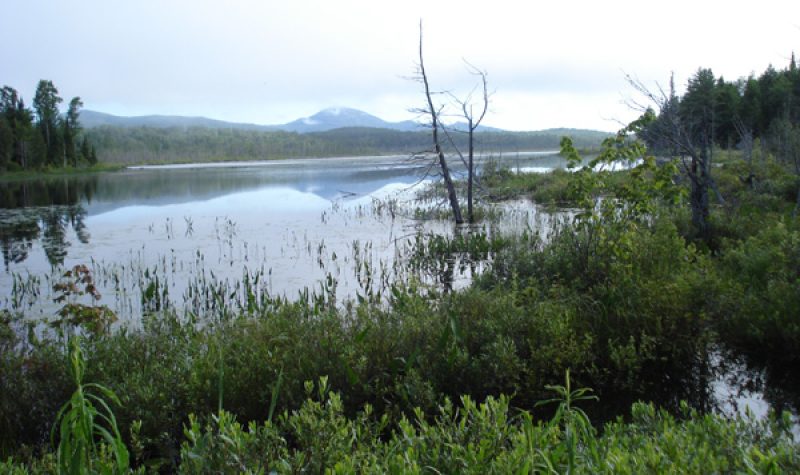Appalachian Corridor is the recipient of $2.19 million in funding from the Ministry of Environment and Climate Change to protect threatened species found in the Northern Green Mountains region of Southern Quebec, particularly in the Eastern Townships.
Over the next three years, Appalachian Corridor will be provided with funding from the Community-Nominated Priority Places Program to mobilize stakeholders, including other conservation organizations, municipalities, and private landowners, and support or implement projects that will help protect and conserve threatened species and their habitats in this specific area of the Northern Green Mountains.
“It’s money that is used to work on different types of activities, on different types of species, and with many partners. In that funding agreement, we financially support nine other initiatives by different partners. We’re distributing about 30% of this envelope to other environmental organizations,” explained Executive Director of Appalachian Corridor Mélanie Lelièvre. “This is quite different from other funding we’ve had before from the federal government, (…) it’s focused on partnerships and making alliances to work on different threats that put pressure on species.”
According to a press release, the Community-Nominated Priority Places program was launched by the federal government in 2019 as a part of Canada’s Nature Fund. The goal of the program is to encourage partnerships and collaborative efforts that have the potential of creating a difference for those species at risk and and their habitats. The program serves as a part of the federal government’s larger plan to address Canada’s loss in biodiversity and natural environments, climate change, and pollution.
For Appalachian Corridor, it will work with partners and stakeholders in the Eastern Townships to protect a number of targeted species such as the Wood Turtle, the Chimney Swift, the Monarch Butterfly, and the Spring Salamander. The organization is currently in the process of acquiring scientific data on these species in order to implement efficient conservation strategies.
“It can be surprising sometimes for people to hear that, but we have a lot of information that is not clear on some species. (…) If we don’t know them correctly, it’s hard to have accurate and efficient conservation activities going on,” noted Lelièvre.
Providing examples on some of the threats species face in the region and the conservation initiatives that can be implemented to address them, Lelièvre said that it is important for Appalachian Corridor to work with its stakeholders on “specific sites” to reduce the impacts of human activity on wildlife and their habitats.
“For example, let’s take the Wood Turtle. It can mean working with a sand [quarry] that is in operation. If there is a nesting site that has been identified, it means working with the owner of the place and trying to avoid this very sensitive area on his property so that the eggs are not disturbed or destroyed by the activities. Another threat is road kills for turtles. Data gathering and recommendations of specific road ecology measures in some areas where there are road kill problems with Wood Turtles, these are the type of threats we are working on with some species,” highlighted Lelièvre.
The Northern Green Mountains are described as one of the world’s largest “undisturbed” temperate forests. Highlighting the importance of the natural area in addressing the loss of natural environments and biodiversity in Canada, Lelièvre explained that Appalachian Corridor received the funding from he Community-Nominated Priority Places program for two main reasons.
“First, it’s the ecological strategic importance of this natural area. The second reason is because there is really something special going on here, people are taking action in conservation. (…) For the ecological importance, it has very large forests, a diversity of habitats, it has been recognized as a critical link for connectivity for the overall natural province, which is the Appalachian Range, and we have many species that are rare, that are threatened, that are at risk,” explained Lelièvre. “(…) Plus, people are involved, things are moving, and many projects are going on. It’s the area in Quebec with the highest concentration of conservation organizations and it’s the area where we have the highest concentration of conservation projects on private land.”
Lelièvre mentioned that financial aide programs that encourage active collaboration in the conservation of nature, like the Community-Nominated Priority Places program, are critical during times of “crisis” for Canada’s wildlife and natural habitats.
“We’re in a biodiversity crisis and the [rate] at which we have population decline, species that are extinct, is accelerating. The scientific community and the governments involve realize how urgent it is. The threats that face nature, the ecosystems, and the habitats have been, mainly over the last 50 years, habitat destruction, habitat fragmentation, pollution, and natural resource extraction and exploitation. To that, we have to add two new major threats, which are the invasive alien species (…) and the climate change threat for the species,” she explained.
There’s no more time to waste on environmental studies and reports, emphasized Lelièvre, only concrete action, on the ground, for the Eastern Townships.
“We have the chance to live in an environment where we still have almost pristine areas, forests, and undisturbed habitats. We have to protect those before it’s too late. If we want them to play their full roll in the ecosystem, we have to maintain the natural integrity of these habitats,” she said.
CIDI reached out to Minister of Environment and Climate Change, Steven Guilbeault, but he was not available before press time.
Listen to the full interview below with Lelièvre below:


